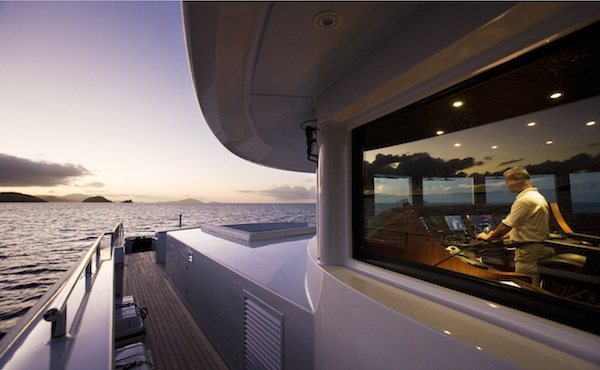Back to basics
In its latest issue, CHIRP Maritime considers a report of the increasing misuse of VHF communications for collision avoidance. 'What happened to just sticking to the COLREGS?'…
Having received a report from a watch keeper who maintains a VHF radio watch, the Confidential Reporting Programme for Aviation and Maritime (CHIRP) used its latest bulletin to analyse the increasing misuse of VHF communications for collision avoidance.
“I notice that there is an increasing amount of [mis]communication between vessels concerning collision avoidance… there is a continuous chatter of vessels making agreements,” writes the reporter, noting that there has been a huge increase in these 'collision avoidance arrangements' over the last 10 years. "What has happened to just sticking to the COLREGS?"
Captain John Rose, director of CHIRP, acknowledges that this is an issue that recurs repeatedly in the reports CHIRP receive. “The COLREGS are based on the tried and tested practice of decades,” Rose explains. “They exist to make the correct actions clear, and were originally developed long before bridge-to-bridge voice communications become available. They are thus unambiguous.
"It is the responsibility of all bridge watch keepers to know how to apply them instinctively, on the basis of observation primarily by sight and radar. They work effectively when ships in an interaction obey them; they also specifically address circumstances where one ship does not."
The report acknowledges that VHF radio communication is, of course, used for the purpose of traffic management, for example in traffic separations schemes. Rose points out that if it is used, neither ship should rely on the other to take the action ‘arranged’ until this is independently verified; indeed it should be assumed that the action has not been taken until it is seen to be happening. The greatest risk attaches to ‘arrangements’, which are contrary to the COLREGS and are hazardous.
Further factors of language confusion, misidentification between the communicating vessels, distraction of other vessels in the area and distraction from the officer of the watch’s primary tasks all add risk to the use of VHF in collision avoidance.
“It is true that AIS has made identification of vessels easier, but at busy moments – especially in heavy shipping situations – mistakes can still be made,” says Rose. “It can also be particularly tempting to use VHF when, as the stand-on vessel, we encounter give-way ships not taking the right action. However the COLREGS make quite clear what to do in this situation: ‘take action to avoid’.”
Finally, CHIRP concludes that the ‘VHF in collision avoidance’ habit can also erode the plain and absolute authority of the COLREGS in the minds of OOWs and, therefore, their instinctive and confident application of them. This represents a serious longer term threat to safety at sea.
“Doubt equals danger,” advises Rose. “VHF communication in collision avoidance can increase doubt, misunderstanding, delay and distraction. Use it only in exceptional situations, and then with utmost caution. Apply the COLREGS, know them instinctively, and take early and substantial action in accordance with them when the circumstances of the case require.”
Issue 44 of CHIRP Maritime, in which this report features, can be read in full here.
Click here to become part of The Superyacht Group community, and join us in our mission to make this industry accessible to all, and prosperous for the long-term. We are offering access to the superyacht industry’s most comprehensive and longstanding archive of business-critical information, as well as a comprehensive, real-time superyacht fleet database, for just £10 per month, because we are One Industry with One Mission. Sign up here.




